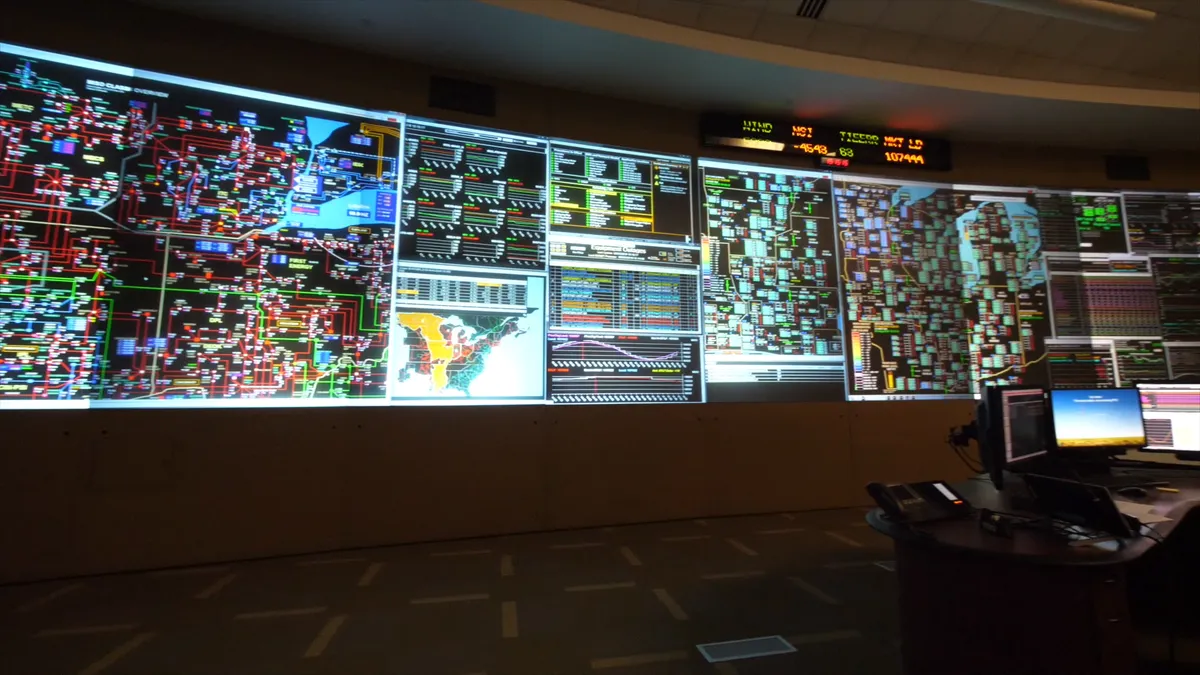Dive Brief:
- Starting next summer, the Midcontinent Independent System Operator faces a possible 2.6-GW capacity shortfall, which could grow to 10.9 GW in 2027, according to an annual survey jointly released Friday by the grid operator and the Organization of MISO States.
- However, depending on how the market responds to MISO’s most recent planning resource auction, or PRA, that saw capacity prices jump across the grid operator’s northern and central regions, MISO could have up to 2.4 GW of surplus capacity in its next planning year, which starts June 1, MISO and OMS said in its survey report.
- “To ensure reliable operations, MISO will be increasingly reliant on emergency or non-firm resources, such as imports, which are not reflected in the survey but have historically been important and available to MISO,” the grid operator and OMS said in the report.
Dive Insight:
As with the last PRA, the survey indicates the planning reserve margin requirement, or PRMR, shortfall is limited to MISO’s northern and central regions. The shortfalls are in zones that include Indiana, Illinois and Missouri.
The North American Electric Reliability Corp. last month said MISO faces a high risk of energy emergencies during peak summer conditions this year.
MISO South has more capacity than it needs, but exports to the north are limited to 1.9 GW, the grid operator and OMS, which represents state utility regulators, noted in the report.
“This survey provides critical information on the rapid changes occurring with our resource mix,” Indiana Utility Regulatory Commission Commissioner Sarah Freeman, said in a statement Friday as OMS president. “Visibility into this type of information is essential for states and utilities to ensure we will be able to cover the resource needs of the region going forward and maintain reliability.”
Conditions could change by the time MISO holds its next PRA in April. Last year’s OMS-MISO survey, for example, indicated the grid operator had a 3.4-GW to 13.9-GW surplus for this year, but the most recent PRA resulted in a 1.2-GW shortfall.
The shortfall risk for next year could be “meaningfully mitigated,” depending on the pace of resource retirements and new capacity additions, MISO and OMS said.
Some of the factors that could ease any possible shortfalls include lower than expected load growth, more generation coming online because of reforms to the interconnection queue process and deferred power plant retirements, MISO and OMS said.
On the downside, supply chain bottlenecks, the federal investigation into solar tariffs and accelerated power plant retirements could increase the capacity deficit, according to the report.
MISO and OMS expect electric demand to grow 0.8% in the next capacity year, reflecting the easing of the COVID-19 pandemic, and then to taper to 0.2% a year.
Based on the “committed capacity” at the time of the survey, all zones in MISO’s North and Central regions, except zone 7, which covers Michigan, would be unable to meet their expected needs by mid-2027.
“By 2027, North/Central will need completion of significant number of MISO [generation interconnection] projects to cover projected committed capacity deficit,” MISO and OMS said in the report.
MISO and OMS define committed capacity as resources in utilities’ rate base, new generators with signed interconnection agreements, external resources with firm contracts to MISO load and non-rate base units without announced retirements or commitments to non-MISO load.














